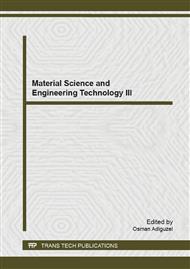p.431
p.438
p.442
p.446
p.453
p.459
p.463
p.467
p.471
Mathematical Modeling of the Drying Process of Chrome Shavings
Abstract:
This paper described the mathematical modeling of chrome shavings drying by performing a microscopic balance for water content to describe the unidimensional transfer of water within the solid at a certain temperature. The deterministic model was solved using Laplace transformation and separation of variables methods in order to determine the average free moisture content at different intervals of time during the drying period. Agreement was observed between both, experimental and modeling data. The effective diffusion coefficient of water molecules during the drying of chrome shavings in a tunnel dryer was determined to be 5.8 x 10-6 m2/h.
Info:
Periodical:
Pages:
463-466
Citation:
Online since:
April 2015
Price:
Сopyright:
© 2015 Trans Tech Publications Ltd. All Rights Reserved
Share:
Citation:


